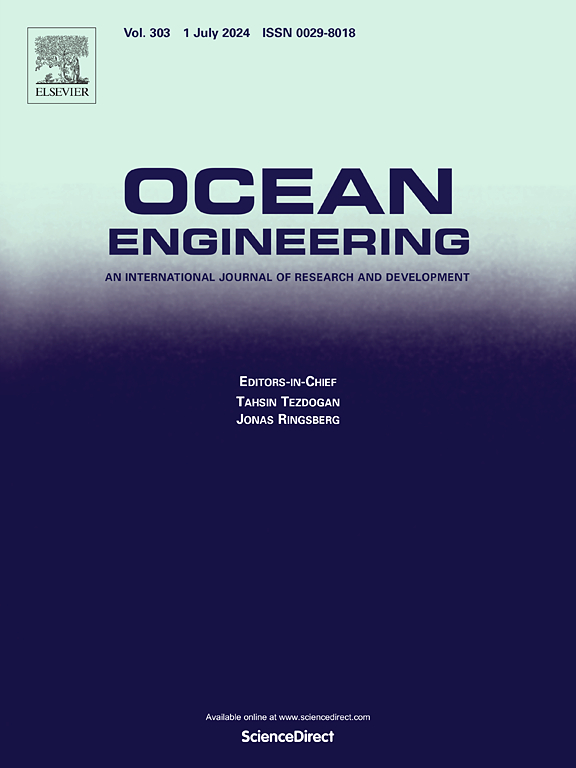Interface separation mechanism in bimetal clad pipes under hard object extrusion
IF 5.5
2区 工程技术
Q1 ENGINEERING, CIVIL
引用次数: 0
Abstract
To investigate the interface separation mechanism of bimetallic clad pipes under external hard object extrusion, the model for the bimetallic pipe under a conical triangular punch was established. The effects of extrusion angle, inner pipe wall thickness, forming clearances, and forming internal pressure on interface separation were studied. The results show that interface separation is non-linearly related to extrusion angle. For the axial interface, the maximum separation of 37.25 mm and 35.17 mm occurs at an extrusion angle of 90° under load and after rebound, respectively. For the transverse interface, the maximum separation of 5.95 mm occurs at 60° under load, and 6.40 mm at 75° after rebound. Separation is negatively correlated with inner pipe wall thickness. Axial separation is positively correlated with forming clearances. The maximum transverse separation occurs at 1 mm forming clearances under load and at 1.5 mm after rebound. The internal forming pressure 60 MPa significantly increases maximum axial separation but reduces transverse separation. Secondary extrusion leads to a further increase in maximum interface separation, though the increase is non-linearly related to punch displacement.
硬物挤压下双金属复合管界面分离机理研究
为了研究外硬物挤压作用下双金属复合管的界面分离机理,建立了锥形三角冲孔下双金属复合管的界面分离模型。研究了挤压角、管壁厚度、成形间隙和成形内压力对界面分离的影响。结果表明,界面分离与挤出角呈非线性关系。轴向界面在载荷和回弹作用下,挤压角为90°时分离最大,分别为37.25 mm和35.17 mm。横向界面在加载60°时最大分离5.95 mm,回弹后在75°时最大分离6.40 mm。分离度与管壁厚度呈负相关。轴向分离与成形间隙呈正相关。最大横向分离发生在负载下的1mm成形间隙和回弹后的1.5 mm。60 MPa内成形压力显著提高了最大轴向分离,但降低了最大横向分离。二次挤压导致最大界面分离进一步增加,尽管增加与冲头位移呈非线性关系。
本文章由计算机程序翻译,如有差异,请以英文原文为准。
求助全文
约1分钟内获得全文
求助全文
来源期刊

Ocean Engineering
工程技术-工程:大洋
CiteScore
7.30
自引率
34.00%
发文量
2379
审稿时长
8.1 months
期刊介绍:
Ocean Engineering provides a medium for the publication of original research and development work in the field of ocean engineering. Ocean Engineering seeks papers in the following topics.
 求助内容:
求助内容: 应助结果提醒方式:
应助结果提醒方式:


